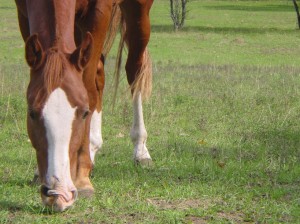Poisonous to Horses: Plants

As a horse owner, I have come to realize that horses have an uncanny ability to get themselves into trouble. Whether it be messing with the fence, making play-things of their stall or breaking into the feed room to grab an extra snack, if we don’t want them to get into it, horses seem to find a way to get into it! If lucky, the vet doesn’t need to be called, but there is usually some upgrading of hardware, the perpetual fixing of the fence or continuously beefing up security around the feed room. But what about the things that we as humans haven’t built? What naturally occurring perils of danger will my horse find and get himself in to?
As Winter fades and Spring makes a welcome entrance, thoughts turn from feeding hay to blissfully sunny pasture turnout. Now is a great time to educate yourself about plants that can harm your horse.
March is poison prevention month and as horse owners, knowing what plants are poisonous to your horse can go a long way in preventing trouble. To help get you started, here is a good resource of information about poisonous plants that grow in the Midwest, from the University of Minnesota Equine Extension Office.
http://www1.extension.umn.edu/agriculture/horse/pasture/poisonous-plants/
If you find plants of poisonous varieties where your horse can access them, please work with your local extension office on methods of controlling exposure. Also remember to check your garden and landscaping as many plants listed are popular decorations.
It is also important to note that plant variety growth varies by geographic region so be sure to check with your local extension office for information specific to the area in which you live.
So while you may not be able to keep them from breaking the fence, breaking into the feed room (despite the keypad lock on the door) or dismantling the components of their stall, you can be aware of and have a plan to manage the poisonous plants that dare grow near your horse.
